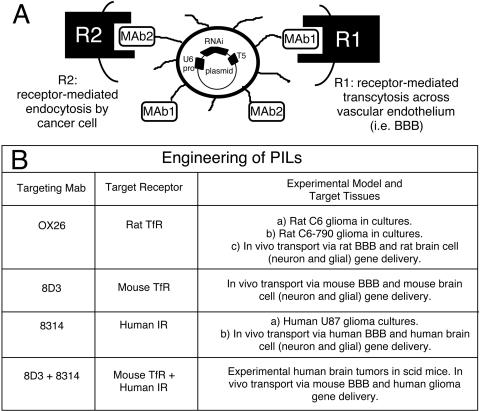FIG. 1.
Engineering of PIL. Top: PIL with supercoiled plasmid DNA encapsulated in the interior of the liposome. The gene encoding the shRNA is under the influence of the U6 promoter and the coding region terminates with the T5 terminator sequence for RNA polymerase III. The surface of the liposome is conjugated with several thousand strands of 2000 Da PEG to stabilize the liposome in the blood.44 The tips of 1-2% of the PEG strands are conjugated with a targeting ligand such as a receptor (R)-specific mAb, which triggers transport of the PIL across biological barriers in vivo. Bottom: PILs can be engineered to target cells in tissue culture and in vivo experimental models in different species. For example, PILs constructed with both 8D3 mouse TfR mAb and the 8314 human insulin receptor (IR) mAb are transported through the BBB via receptor mediated transcytosis, and it will target human glioma cells in an experimental mouse model of human brain tumor via endocytosis.29,41–46

